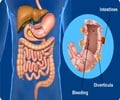Screening for blood pressure, high density lipoprotein, blood glucose levels may indicate the risk of cardiometabolic risks in children.

- Childhood obesity is on the rise and early detection is crucial to control the group predisposed to obesity.
- There is no reference scale to identify children at risk of obesity.
- Pediatricians suggest that focusing on clusters of cardiometabolic risk factors may help target intervention.
"Rather than focusing on specific cut-off levels of risk factors or whether a child's condition fits a particular definition of metabolic syndrome, we propose that pediatricians look for youth with multiple component risk factors, such as high blood sugar, hypertension, obesity and abnormal lipid levels. These children should be targeted for more intensive intervention efforts."
Check For Metabolic Syndrome in Children
"Metabolic syndrome" (MetS) was coined in 2001 by the National Cholesterol Education Program Adult Treatment Panel III to describe a cluster of factors that leave adults at higher risk for developing diabetes and cardiovascular disease.
The topic remains controversial within pediatrics, but the study team describes the current state of play and offers evidence-based recommendations to guide clinicians on how to approach MetS in children and adolescents.
- High blood sugar (hyperglycemia)
- Increased waist circumference (central adiposity)
- Elevated triglycerides
- Decreased high-density lipoprotein cholesterol (HDL-C), so-called "good" cholesterol
- Elevated blood pressure (hypertension)
However, insulin retains the ability to stimulate fatty acids, which promotes even more fat cell expansion. Ectopic fat ends up stored in unexpected places, such as the liver. To top it off, the increased fat deposits end up causing increased inflammation in the system.
Although more than 40 varying definitions have been used for kids, there is no clear consensus whether to use a MetS definition for children at all, especially as adolescents mature into adulthood. Depending on the study, at least 50 percent of kids no longer meet the diagnostic criteria weeks or years after diagnosis.
"Given the absence of a consensus on the definition of MetS, the unstable nature of MetS and the lack of clarity about the predictive value of MetS for future health in pediatric populations, pediatricians are rightly confused about MetS," Dr. Magge and co-authors write.
As a first step to lowering their patients' cardiometabolic risks, pediatricians should prevent and treat obesity among children and adolescents, the study authors write.
- Each year, clinicians should perform annual obesity screening using body mass index (BMI) as a measure, and also should screen children once a year for elevated blood pressure.
- Non-fasting non-HDL-C or fasting lipid screening should be done for children aged 9 to 11 to identify kids whose cholesterol levels are out of line.
- Screening for abnormal glucose tolerance and Type 2 diabetes in youth with BMI greater than or equal to the 85th percentile, 10 years or older (or pubertal), with two additional risk factors, such as family history, high-risk race/ethnicity, hypertension or mother with gestational diabetes.
Reference
- Sheela N. Magge et al.,AAP counsels pediatricians to focus on clusters of cardiometabolic risk factors to help obese kids, Pediatrics(2017), http://dx.doi.org/10.1542/peds.
Source-Medindia















